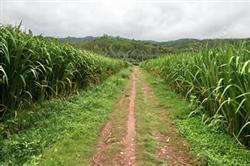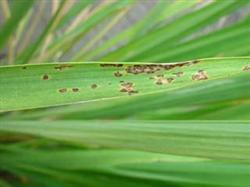The basic process of planting rape
Rape is also called Brassica campestris. The predecessor of Brassica campestris is Chinese cabbage in southern China. Unlike Chinese cabbage, its color is dark green, which is different from the white of Chinese cabbage. Its taste is also very different, although the market price of oil cabbage is relatively low, but its market demand is very large. As the saying goes, a Mickle makes a Mickle, so there are certain planting prospects. So today, the editor will talk about the specific process of growing Chinese cabbage. Let's take a look at it with the editor.

1. Base fertilizer
Before sowing, it is necessary to apply sufficient base fertilizer, and after ploughing and exposure, equivalent base fertilizer is applied according to the area of the land, which is mainly based on farm fertilizer and supplemented by compound fertilizer such as potassium phosphate. Fully stir with the soil to enhance the soil fertility and promote the germination and emergence of seeds. It can also enhance the resistance of seedlings, reduce the incidence of diseases and insect pests, and lay the foundation for high yield and high efficiency.
2. Seed selection
No matter what you plant, the first step is to choose a good variety, which is directly related to the yield in the later stage. Therefore, when we choose varieties, we should choose excellent varieties with high yield and strong disease resistance. This can save a lot of trouble in the later management and achieve twice the result with half the effort.
3. Soaking seeds
When it is not possible to determine whether the seed contains potential bacteria, it is necessary to carry out a seed soaking treatment to eliminate the germs in the seed. First put the seeds in the sun for three hours, then soak the seeds in water with a water temperature of about 50 degrees until the water temperature drops by 30 degrees, and then fish them out and air-dry them after two hours before sowing.
4. Sowing seeds
Sowing time also has certain requirements, the most suitable sowing season is in spring, every year around March can sow seeds. So we should do all the preparatory work before March, such as base fertilizer and seed soaking and so on. When sowing, according to the wetness of the soil, irrigate the soil to make soil moisture, and wait until all the moisture enters the soil thickness to sow. It is necessary to pay attention to the sowing density and dig the bed to facilitate later management.
5. Management
When two true leaves are unearthed, it is necessary to start the first seedling work, keeping all the seedlings apart at about 3 cm. When the heart of cabbage grows in the second time, the planting density needs to be further expanded. There is not much water needed at the seedling stage, so as long as it is not too dry, there is no need to water it. Water should be watered at least three times during the growth period, not in overcast and rainy weather.
6. Drainage
Chinese cabbage is extremely intolerant to waterlogging, and because the sowing time is in the rainy spring, we should pay attention to the drainage in the garden. Without timely drainage, stagnant water will not only have a great impact on the growth and development of Chinese cabbage, but also cause a variety of diseases. Therefore, the drainage after sowing is very important, it is best to set up waterproof facilities.
The above is the basic process of planting Chinese cabbage. Planting Chinese cabbage is relatively simple, but it is difficult to manage. Attention should be paid to timely topdressing, especially in the first half of the month of harvest, applying appropriate amount of urea according to the planting area to improve the quality of Chinese cabbage. We also need to control the occurrence of all kinds of diseases and insect pests in order to achieve high yield and high efficiency. Well, that's all for today's introduction. If you want to know more about it, please continue to follow us!
- Prev

How to manage Zizania caduciflora for overwintering
Zizania caduciflora is a temperature-loving plant, which propagates asexually by tillers and tillers. It is suitable for growth at a temperature of 10-25 ℃ and is not resistant to cold, high temperature and drought. The frost-free period in the cultivated area is more than 150 days, and its leaves die after frost, and it can withstand a low temperature of-10 ℃ in dormant period. The frost-free period in northern China is short, mainly planting single-season Zizania latifolia, suitable for single-season Zizania latifolia.
- Next

Identification and control of sheath blight of Zizania caduciflora
[symptom characteristics] Zizania latifolia blast, also known as Zizania caduciflora gray heart disease, mainly affects leaves. Leaf disease spots can be divided into three types: acute, chronic and brown spot. The acute type of spot is dotted, dark green, and the gray-green mildew layer on the back of the spot (conidia and conidia) is more obvious, which is the precursor of the epidemic of Zizania latifolia white plague. The chronic spot is nearly fusiform.
Related
- Where is it suitable to grow horseradish in China? it is expected to see the middle altitude horseradish in Alishan.
- How to prevent tomato virus disease reasonably? (Control methods included)
- Many people like to plant towel gourd on the balcony. What are the main points of this method and management?
- What crops can chili peppers be mixed with?
- Fertilization techniques and matters needing attention in Tomato
- What are the grafting techniques for peach seedlings in spring?
- Harm and control methods of root swelling disease of Chinese cabbage
- What are the pests of sweet potatoes? How to prevent and cure it?
- Symptoms, causes and Control methods of navel Rot in Tomato
- The cause of "Cucumber rotten bibcock" in Farmers' planting Cucumber and its Control Plan

